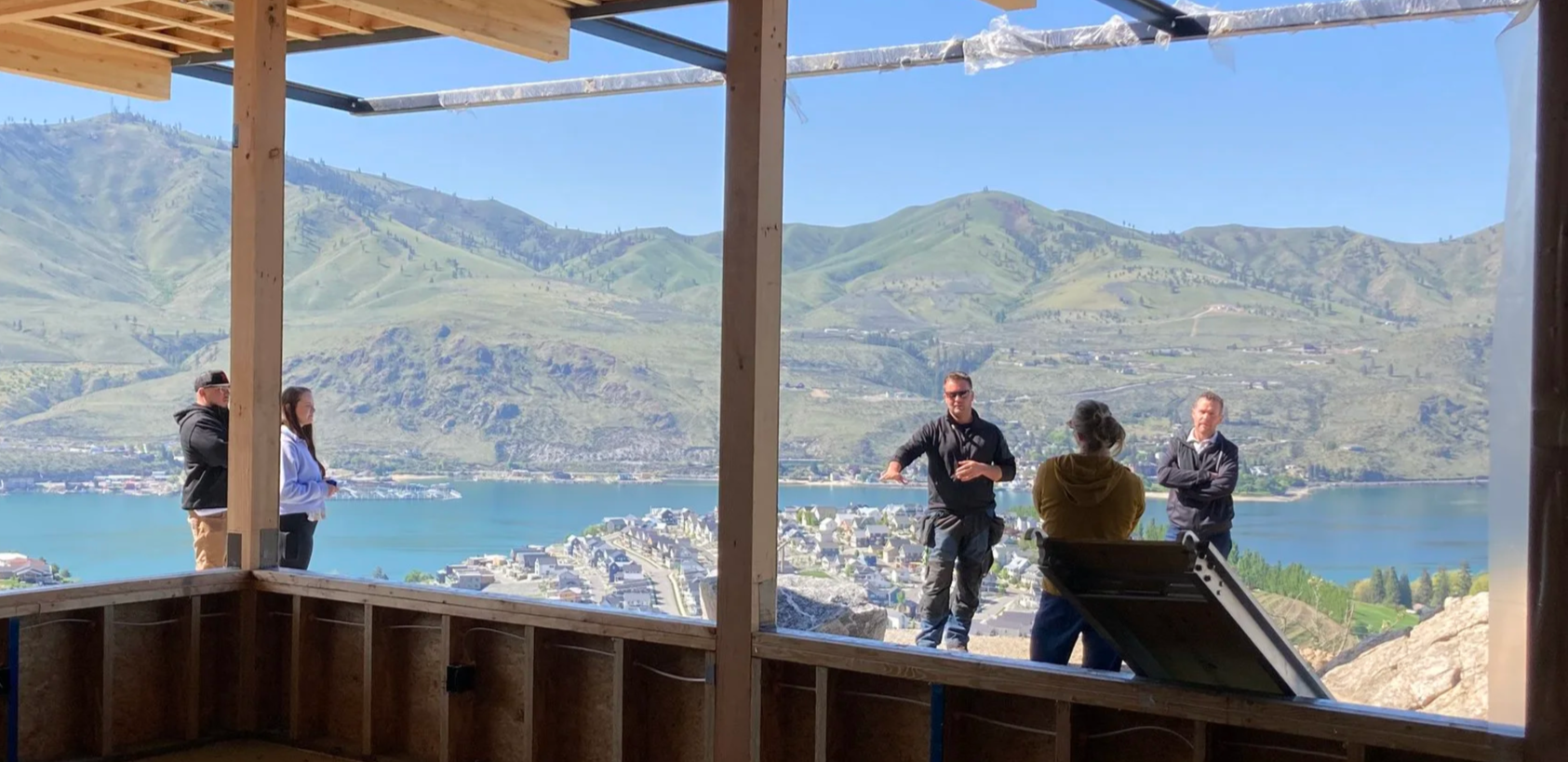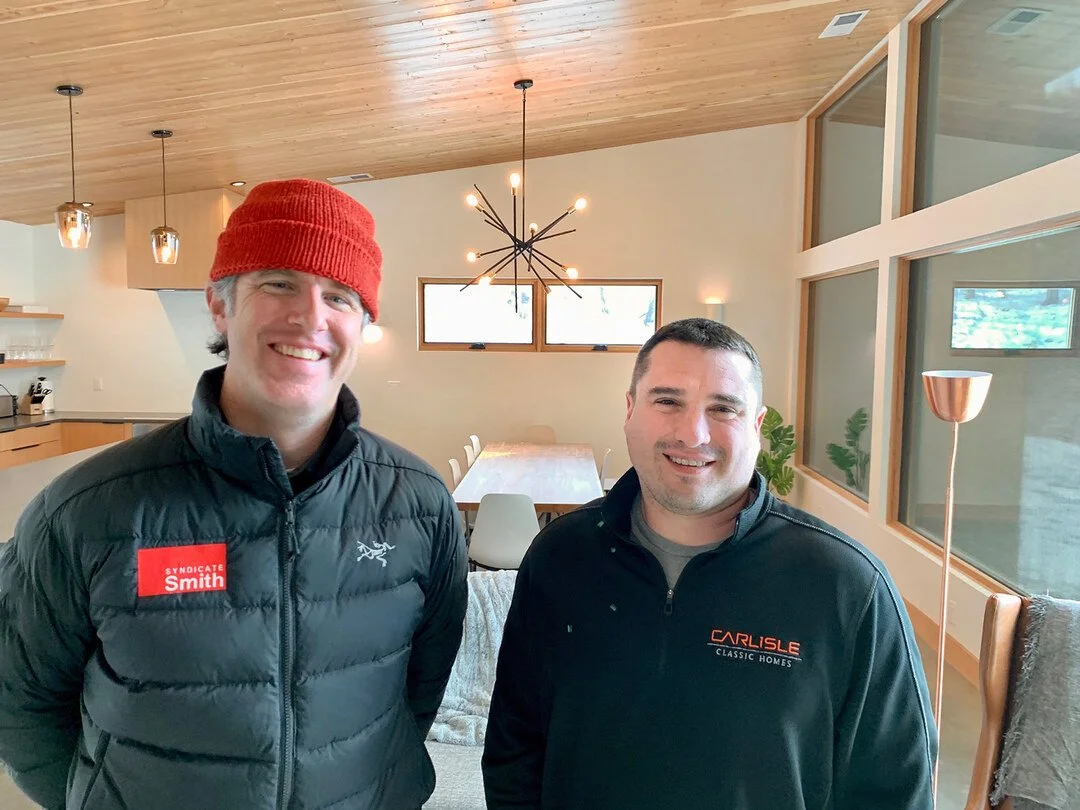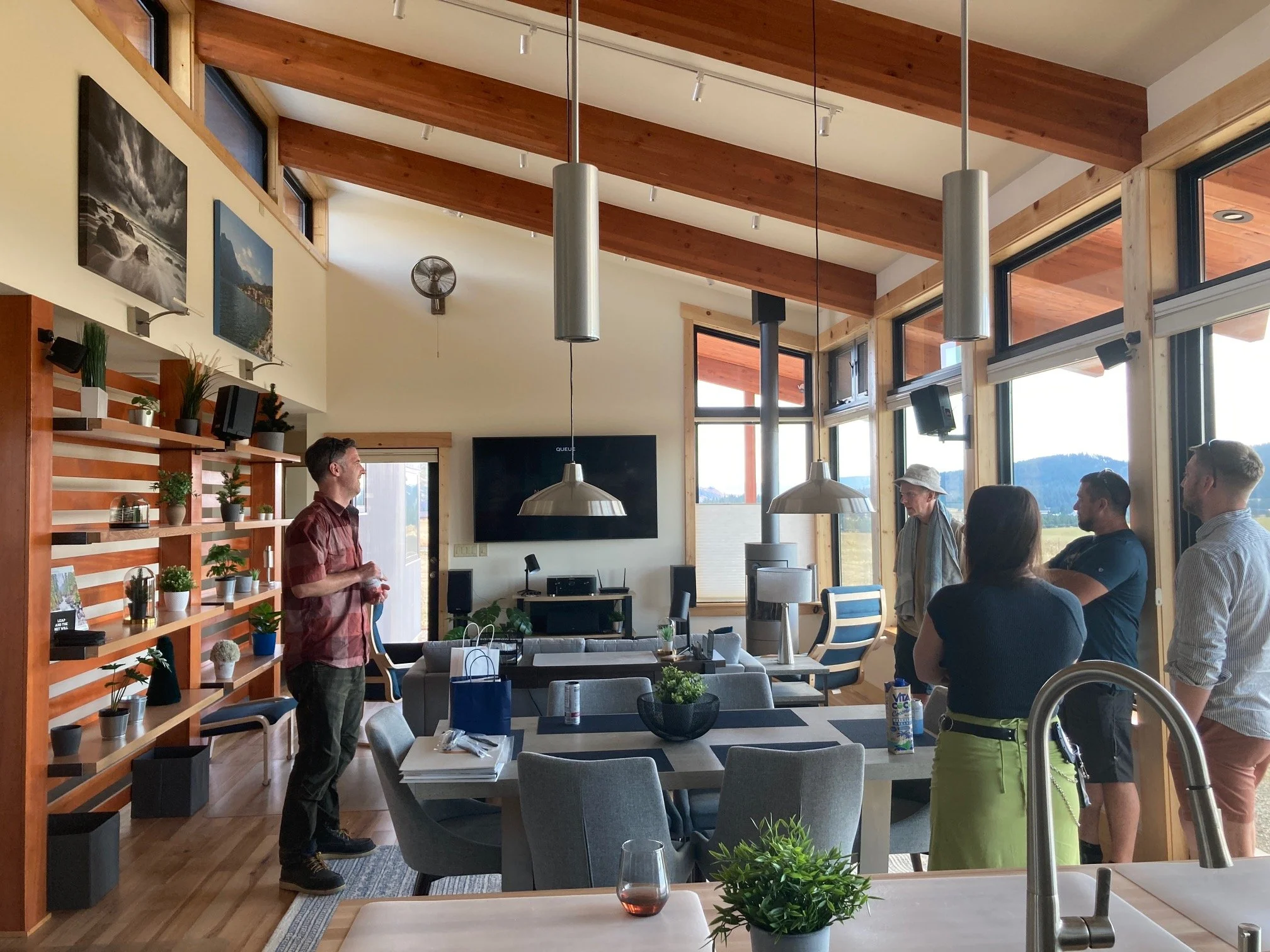Building Together: Part 4 - The Importance of Site Visits
Syn Smith team with the GC, Blu Water Homes, at a project over Lake Chelan.
Photo: Steven Booher
Welcome to the final chapter of our Building Together series! So far, we’ve explored the power of a strong team, the necessity of clear communication, and the balancing act of cost estimation and value engineering (VE). Now we’re wrapping things up with one of the most practical—and essential—tools in any successful construction project: site visits.
Site visits might seem straightforward, but they offer immense value when leveraged intentionally by the architect, contractor, and client. They aren’t just casual walk-throughs—they’re collaborative opportunities to verify, refine, and elevate the project as it comes to life in the real world.
Site Visits: The Reality Check Your Project Needs
Plans on paper can only go so far. Site visits bridge the gap between design intent and built reality. They allow the full team to step into the three-dimensional space, evaluate construction progress, and collaborate on design decisions in real time.
Regular site visits help ensure that:
The build aligns with drawings and specifications
Emerging challenges are caught and addressed early
Design choices make sense in context
The client feels engaged and confident in the process
Think of site visits as the quality control checkpoint of the Architect-Contractor-Client triad. Everyone benefits when decisions are made with real-world context.
Each Project Is a Prototype – Site Visits Are the Final Refinement
Every custom home or new building is a first-of-its-kind prototype. That means the construction phase is not just about executing a design—it’s also about adjusting and improving the design in real-time.
Site visits are when abstract ideas become physical realities. They help the triad:
Evaluate scale, proportion, and flow in person
Spot inconsistencies between design and construction
Make better decisions faster by seeing the space with their own eyes
Many of the best design moments happen on site—that perfect window alignment, the right trim transition, the lighting adjustment that makes a room sing. These refinements aren’t possible without being physically present.
Evan VanSandt on site with the builder at one of our Ravenwing projects
Photo: Matt Porter
Architect’s Role in Site Visits: Design Stewardship in Action
Architects use site visits to protect the integrity of the design while remaining open to the realities of construction. It’s our chance to:
Confirm that design elements are being built accurately
Provide clarification on details that aren’t translating as expected
Collaborate with the contractor to fine-tune solutions in the field
Sometimes we spot something that looks better adjusted slightly. Other times we help explain the design rationale so contractors can offer informed alternatives. Either way, being on-site allows us to uphold the vision while improving constructability.
Todd Smith and Chris Groby of Carlisle Classic Homes on site at Fox Road 02
Photo: Mike Irwin
Contractor’s Role in Site Visits: Practical Wisdom and In-Field Innovation
Contractors are the ones physically building the project, and site visits give them a platform to share real-world insights that can optimize the design or construction method.
Some of the things a contractor might contribute during a site visit:
Mock-ups to compare material choices or installation options
Suggestions for simplifying complex assemblies
Advice on sequencing or adjustments to save time and cost
Site visits allow the contractor to be a creative problem-solver—not just an implementer. Their firsthand knowledge often leads to some of the most elegant and cost-effective design tweaks.
Syn Smith Team, contractor, and home owner at final site visit at a completed project in Cle Elum, WA
Client’s Role in Site Visits: Confidence Through Clarity
Clients often feel most confident when they can see the progress and understand how their investment is taking shape. Site visits empower clients to:
Participate in material and layout decisions on-site
Ask questions and provide input as construction evolves
Feel engaged, informed, and excited about the build
Some decisions are simply easier when made in person—like paint colors in natural light, or choosing where to center a pendant light in a kitchen. Site visits allow for quick decisions that might otherwise create delays.
When (and How Often) to Visit
Not every project requires weekly visits, but they should be timed around key milestones. Some of the most strategic times to walk the site include:
Layout verification before foundations are poured
Framing walkthroughs to review spatial layout and openings
MEP rough-in to verify outlet placements, plumbing lines, and lighting
Finish installation to approve tile layouts, hardware placement, etc.
For remote clients, photo documentation, video walkthroughs, or virtual calls are helpful alternatives—but nothing beats walking the job with the team whenever possible.
Solving Problems Before They Become Headaches
Let’s be honest: construction doesn’t always go according to plan. Unexpected conditions arise, materials get delayed, or field adjustments are needed. Regular site visits allow the triad to address these issues before they turn into expensive or time-consuming problems.
Here’s how site visits help keep things on track:
Spot discrepancies early (before drywall or finishes go in)
Coordinate changes efficiently and with all voices present
Build trust through transparency and shared decision-making
The ability to resolve an issue in the field—quickly and collaboratively—can save time, money, and a lot of stress.
Key Takeaways
Seeing is believing: Site visits make abstract plans tangible, helping everyone make better decisions in real time.
In-person = alignment: Walking the site together strengthens trust, ensures quality, and keeps the design on track.
Refine as you go: The project is a prototype—site visits offer one last chance to optimize before it's complete.
Stay involved, stay informed: For architects, contractors, and clients alike, site visits are the best way to stay truly connected to the project’s progress.
Final Thoughts: Building Better, Together
As we close this Building Together series, we come full circle: the Architect-Contractor-Client triad is at its best when all parties are engaged, collaborative, and present—whether that’s in meetings, on email, during cost evaluations, or walking the job site.
Site visits represent the culmination of the process—where ideas take shape, questions get answered, and solutions are born. They remind us that construction isn’t just about getting from A to B. It’s about creating something intentional, beautiful, and built with care.
Thanks for following along with the Building Together series. We hope it’s helped illuminate the many ways a strong triad can transform a project—and we look forward to building with you.
Sam Wade, Architect / Project Manager / LEED Green AssociateSyndicate SmithContact



